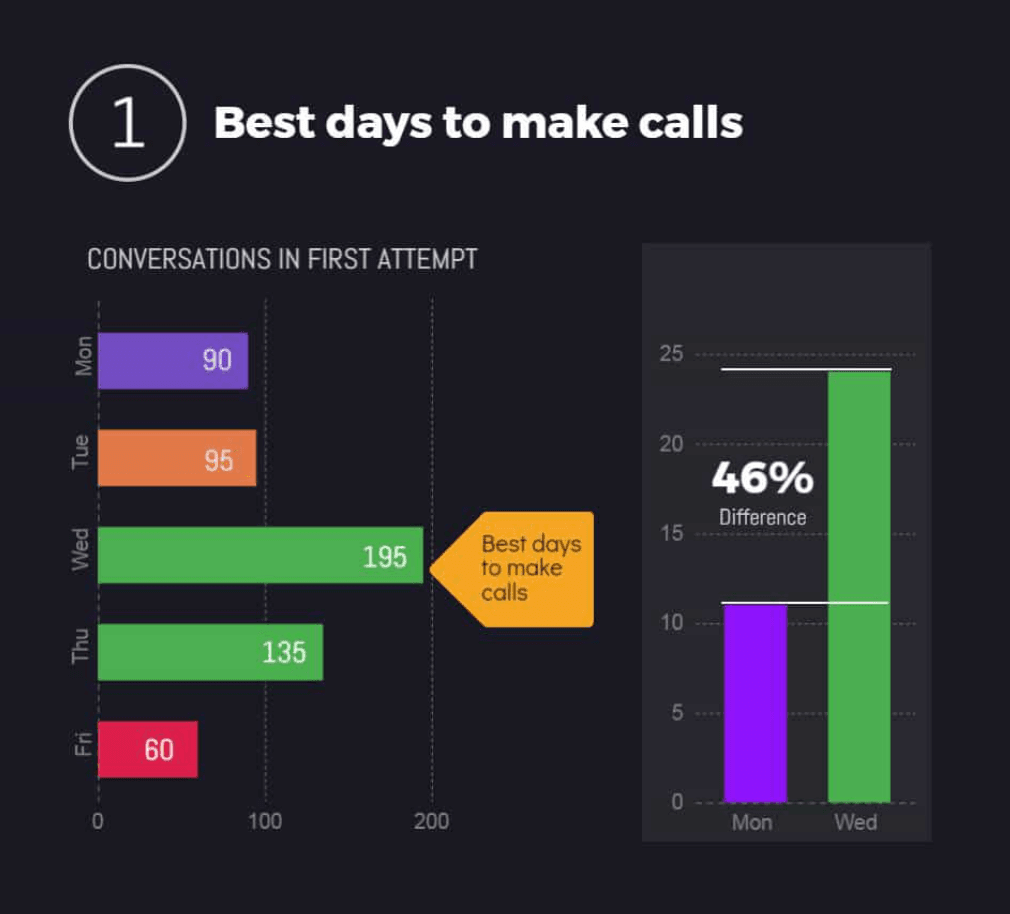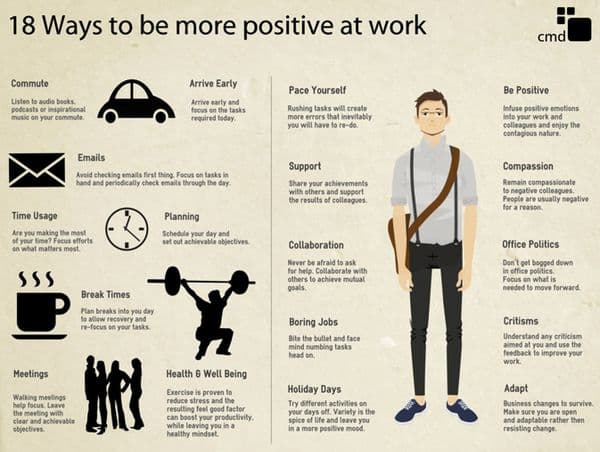How to Sell Over the Phone: 20 Techniques + Tips
Casey O'Connor
Selling over the phone gets a bad reputation, but it’s actually not as bad as most salespeople believe. With a little bit of practice and strategy, telesales can be a very lucrative way to make a sales career.
In this article, we’ve pulled together some of the best tips and tactics for making your sales phone calls smooth, positive, and (most of all) profitable.
Here’s what we’ll cover:
- When Should You Sell Over the Phone?
- Techniques of the Best Phone Salespeople
- 20 Phone Sales Tips and Tricks
When Should You Sell Over the Phone?
With the rise of inbound marketing, cold calls are becoming less and less common in the sales world. But make no mistake: as long as you’re a salesperson, you will need to have solid phone skills — even if you never make a single cold call. Research shows that 92% of customer interactions still happen over the phone.
That being said, it’s important to acknowledge that the telesales landscape is definitely changing. With text, email, and social media messaging available at the world’s fingertips, people are simply less tolerant of being on the phone.
Selling over the phone has a lot of advantages (over 6.8 BILLION people have cell phone subscriptions — hello, sales pipeline!), and knowing when and how to use this sales technique will come in handy.

First, it’s important that your sales team know the best times during the sales process to pick up the phone and make things happen. Research shows that potential clients are most likely to answer the phone at around 10:00am.

On the other hand, the data also shows that there are some pretty awful times to call prospects — 6:00am and 7:00am making the top of that list. Use your common sense here. If you need to reach a decision-maker outside of their workday (pay attention to their time zone!), try to aim for the evening rather than early morning.
Prospects are also most likely to answer on Wednesday than any other day of the week.
Best Day to Make Calls:

Outbound phone sales and cold calls are a bit of a grab bag, but inbound phone sales are slightly more predictable. For inbound leads, hop on the phone as soon as you get some interest — potential customers who fill out web forms are 100x more likely to answer the phone within 5 minutes of submitting them.
Regardless of when you call or connect, remember that your intention is to build rapport and gain trust. The feeling of relief when you finally hear someone on the other end pick up the phone can be quite a rush — remember to avoid being pushy.
Techniques of the Best Phone Salespeople
Believe it or not, it’s not luck or innate ability that make certain salespeople great at telesales. Every sales professional can be successful with this sales strategy; all it takes is knowledge, practice, and perseverance.
Here are some of the key things all great phone-based sales reps focus on to build profitable client relationships.
Master Your Mindset
Telesales can be grueling, but remember: your 20th phone call of the day is only the first time that prospect is hearing from you. Take care to reset between each call, and ensure that every person that answers your call hears a voice that’s pleasant and refreshed. Keeping a positive mindset can make all the difference.

Many sales reps really underestimate how much their attitude affects their job performance. It’s unlikely that your potential clients would be rude or dismissive in person, but for some reason, that feels easier and less personal over the phone. There are times where you might feel rejected. Not ideal, but don’t let it get to you — it isn’t personal.
Start each day with a fresh mindset, and try to think outside the box. Most people will know you’re selling something from a mile away if you start with a forced, “Do you have a few minutes to talk about…” Be authentic, be positive, and be natural on each and every phone call.
Tip: Techniques to help master your productivity and mindset — 15 Sales Productivity Hacks for B2B Sales Reps.
Be Polite but Stay in Control
There’s no faster way to end a sales call than to hand over the reins to the prospect. The most successful phone sellers are always in control of the sales conversation.
Now, this certainly doesn’t mean that you should spend the entire time talking or asking questions. In fact, salespeople who close the most sales actually spend more time listening than talking.

Staying in control of a telephone sales call means:
- Preparing for the call ahead of time with prospect research
- Having a flexible list of discovery questions to guide your conversation
- Learning how to productively respond to common objections (more on this in a minute)
And of course, remember to always be polite.
Learn to Handle (and Opportunize) Objections
It’s highly likely that you’ll encounter some objections over the phone, whether you’re highly skilled in cold calling or a web-based salesperson who’s simply following up with a quick phone call. Remember, don’t take any of these objections personally — consider them part of the territory.
In fact, the very best phone-based salespeople actually consider objections to be opportunities to get closer to the customer’s pain points.
Some of these objections are obvious — comments like “This seems too expensive” should be readily prepared for. But customers also raise objections in less common ways, and sales reps should keep their ears open for these opportunities to learn more about the prospect’s truth.
On your next sales call, reframe your thinking when you hear something like the following:
- How long will this take to roll out?
- What is your customer support process?
- How can I upgrade my plan if I decide to go that route?
These seem like straightforward questions on the surface, and ones that are easily answerable by most sales reps. But even these kinds of questions should give you pause — you need to know why your prospect is asking them.
Learning your customer’s “why” — before they have a reason to object — will help you address any underlying concerns the prospect might have.
20 Phone Sales Tips and Tricks
Now that we’ve covered some of the more general strategies for improving your phone selling, let’s look at some more specific strategies for improving this sales skill.
1. Take Care of Your Appearance and Workspace
First things first — look good, feel good.
It may sound silly, but taking care of clutter on your desk and sprucing up your appearance before a sales call can really put you in the right frame of mind. Just because your prospect can’t see you doesn’t mean you shouldn’t pay attention to your physical space. A clean workspace increases persistence by a whopping 84%, so take the time to tidy up a few times a week (or daily, if necessary).
2. Rehearse
You know the old saying, “practice makes perfect.” Phone sales are no different. Know your product, know your pitch, and know specifically how to answer the most common questions or objections.
Take note, though, that you don’t want to sound rehearsed on the actual call. You should be familiar enough with your product and pitch that you can fluidly discuss your value offering without it sounding scripted.
3. Prepare Your Fillers
Nothing makes you sound less prepared than saying “um” or “like” fifteen times a minute. That’s not to say you shouldn’t ever need to pause and think — sometimes it takes time and careful consideration to answer a prospect’s question effectively.
On your next sales call, try to ditch “um” and replace it with one of the following, slightly more professional phrases:
- Hmm, let me think about that for a minute.
- That’s true, you bring up a good point. I’ll have to think about that some more.
- I’m not sure, but I’m making a note now to ask X. I’ll follow up with an email by the end of today.
All of these sound leagues better than “um” or “like,” and allow you to maintain professionalism.
4. Ditch the Routine
Routines are important for productivity, but planning your sales calls to be repetitive — that is, calling the same people at the same time every day — can lead to some less-than-productive patterns.
From the customer’s side, they may be more likely to screen your calls if you call consistently at the same time every day.
On the sales rep’s side, it can lead to complacency and, in some cases, challenging mental barriers that will build up subtly over time.
Switch things up to keep your mindset positive. Spread your cold calls out throughout the day, rather than doing them all at once. Start one day with your most challenging prospect, and end with them the next. It’s okay to have some kind of structure, but a little variety will work in your favor.
5. Do Your Research
Even if you’re only in the prospecting stage, it’s still up to you to get as much research done before the call as possible. LinkedIn and other social media are your friends!
Here is a pre-call research checklist designed for your discovery call:

Pro Tip: Get quick access to your prospect’s interests, backgrounds, connections, etc. without having to leave your inbox. Get LinkedIn right in your inbox with Yesware today.
6. Shift to the Positive
Never underestimate the power of positivity.
Notice the way your prospect talks about their problems, and see if you can reframe them to the affirmative point of view.
For example, if the prospect says, “I don’t want to spend that much on a product like this,” you might reframe this sentiment in the positive by saying, “It sounds like staying within budget is a priority for you.”
When you hear a “don’t” or a “can’t” (from either you or the prospect), take that as an opportunity to rephrase in the affirmative.
7. Smile Through the Phone
Here’s a tried-and-true phone tactic: smile as you talk.
This tip comes up often because it works. Your prospect will be able to “hear” your smile through the phone (it has big benefits for your own mindset, as well).
8. Say Their Name
It’s a scientific fact that humans love to hear their own name. See if you can find an additional opportunity or two to include it in the conversation.
Again, this is another place where going overboard can backfire — there’s a fine line between the subtle psychological perks of hearing your own name, and the creepy feeling you get when someone won’t stop saying it.
9. Tell a Story
Throughout human history, the number one way people have learned to relate to each other is through storytelling.
Where appropriate, see if you can weave a story into your conversation. Studies show that stories are excellent for getting to “yes” with gatekeepers and decision-makers.

Try keeping a few customer success stories in your back pocket, and look for an opportunity to bring them up in conversation.
10. Talk to the Person, Not the Product
While it’s true that the ultimate goal of the sales call is to sell products, you should be spending most of your focus and energy on building rapport with your prospect.
Remember, sales are made through relationships, not the long list of features and benefits.
11. Listen For Cues
One of the trickiest things about phone selling is that you can’t read the other person’s body language to help gauge their thinking. But just like a customer can hear your smile through the phone, so too can you read their body language through other over-the-phone cues.
Listen for piqued interest through voice inflection, or frustration via loud sighing. Verbal and non-verbal cues can help you know when to push on with your pitch, and when to back off a bit.
12. Active Listening
Active listening is a critically important part of any sales conversation. While some of the more standard active listening strategies are best received in person, there are plenty of ways to show your prospect that you’re eagerly engaged in what they’re saying even over the phone.
 Listening actively helps your customer feel like you care about their problems; it also helps you determine the right questions to ask to move the conversation forward.
Listening actively helps your customer feel like you care about their problems; it also helps you determine the right questions to ask to move the conversation forward.
13. Be Honest
No matter how great your product or service is, the truth is that it won’t be a great fit for every prospect you talk to. That’s okay.
If a customer asks a question, and an honest answer would indicate that it’s not a good fit (or not the right time), stick with the truth. There’s nothing that can ruin a small business’s reputation faster than dishonesty.
14. Manage Your Time
One great way to show your prospect’s respect is by keeping your call efficient. Effective time management on your sales calls will also help you meet your quota.
If you need to, set a timer on your phone or keep one insight at your desk.
15. Let Money Come Up
In some sales strategies (like value selling, for example), you want to avoid discussing pricing until closer to the end of the conversation.
In most sales calls, however, it’s okay to discuss budget and pricing earlier on in the conversation. It can be very frustrating for both prospect and rep to go through a long pitch, only to find out the product is out of their budget.
Of course, pricing is one of the most common sales objections to any product, so it’s up to you as the seller to be prepared for pushback here. It can be a delicate process, but practice will help you learn when to toe the line. But the fact is that some products are just out of a prospect’s price range, and it’s best to establish that up front before anyone’s time is wasted.
16. Avoid the Competition
No matter how much better you believe your product to be than anyone else’s out there, you should never bad mouth your competition. In fact, you shouldn’t mention them at all. It’s a huge turn-off for prospects.
Trust that your customers can do their own research, and trust that your product and pitch are worthy.
17. Recap
Paraphrasing is one powerful active listening strategy that lends itself really well to sales calls.
Recapping your customer’s thoughts throughout and at the end of a sales call is a great way to show them that you were listening carefully. It also allows you to clarify anything that needs attention.
18. Review the Game Tape
Many top phone sellers record themselves on their sales calls and listen to the recordings later on.
This kind of review can give valuable insight into less common customer objections, and can strengthen your overall pitch. Of course, make sure you have the customer’s consent before you hit record.
19. Stretch Your CRM
When you’re making a dozen or more sales calls in a day, it can be tough to manage who gets a call and when. Your CRM software can help you juggle the many moving pieces.
Pro Tip: Automatically sync all sales activity to Salesforce with Yesware. Add CRM Sync to your Outlook or Gmail inbox today.
20. Fake It Til You Make It
The bottom line is, phone sales take practice. Not every call will go perfectly, or even feel natural — especially in the beginning. Imposter Syndrome is a real thing, and it can be easy to feel like you’re not cut out for it.

Remember that every phone seller started where you are. The only thing that stands between top phone sellers and novice ones is practice.
Get sales tips and strategies delivered straight to your inbox.
Yesware will help you generate more sales right from your inbox. Try our Outlook add-on or Gmail Chrome extension for free, forever!
Related Articles
Casey O'Connor
Anya Vitko
Anya Vitko
Sales, deal management, and communication tips for your inbox

